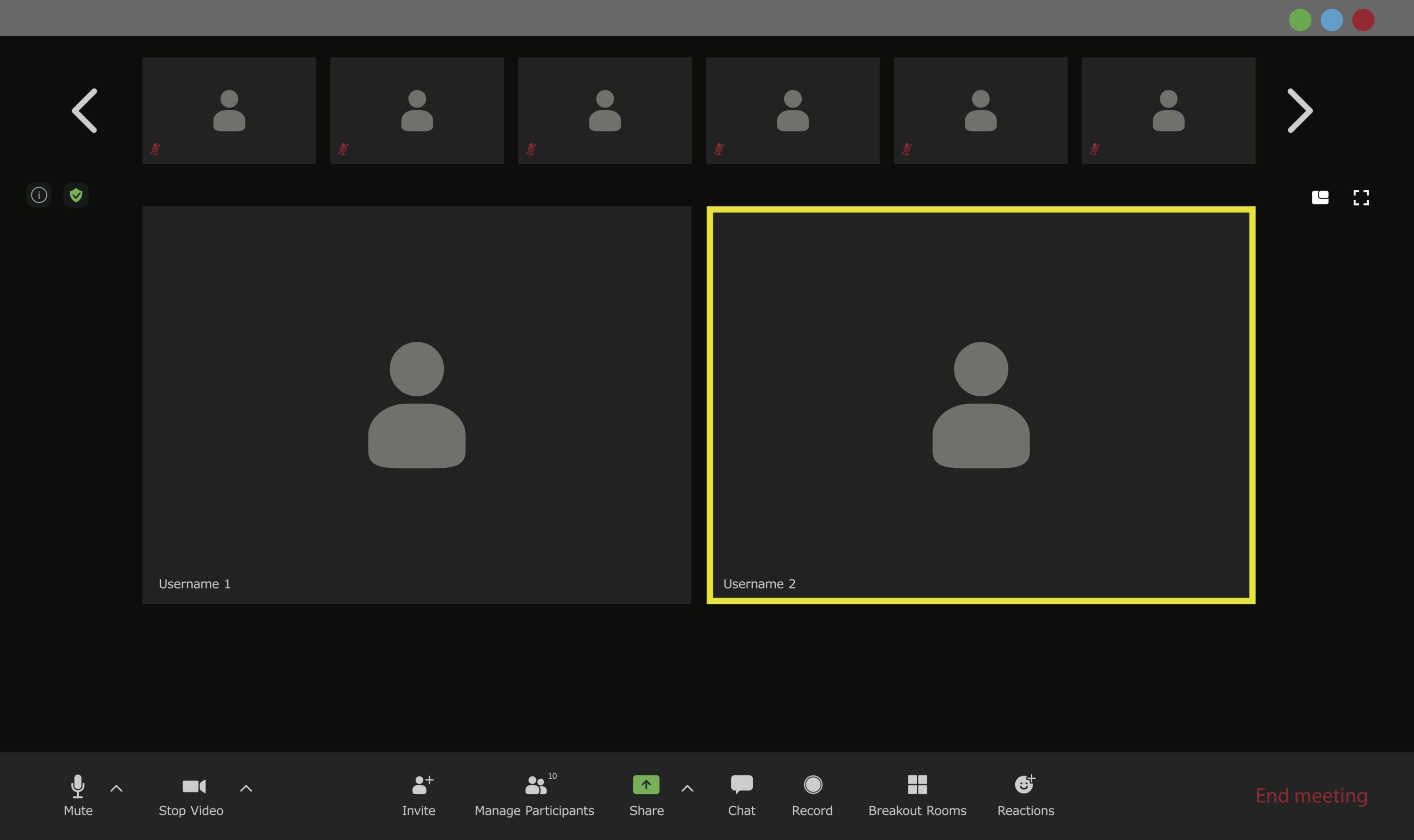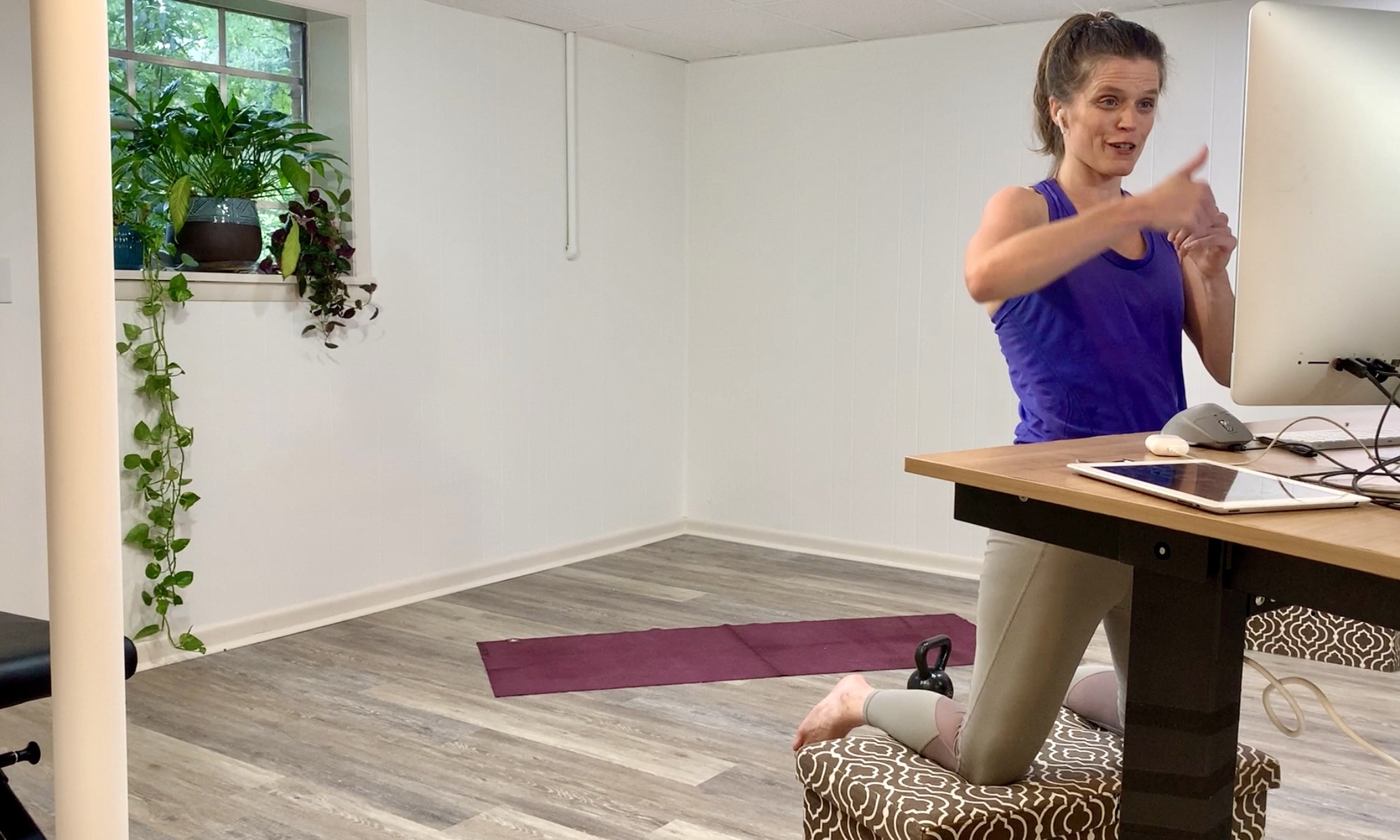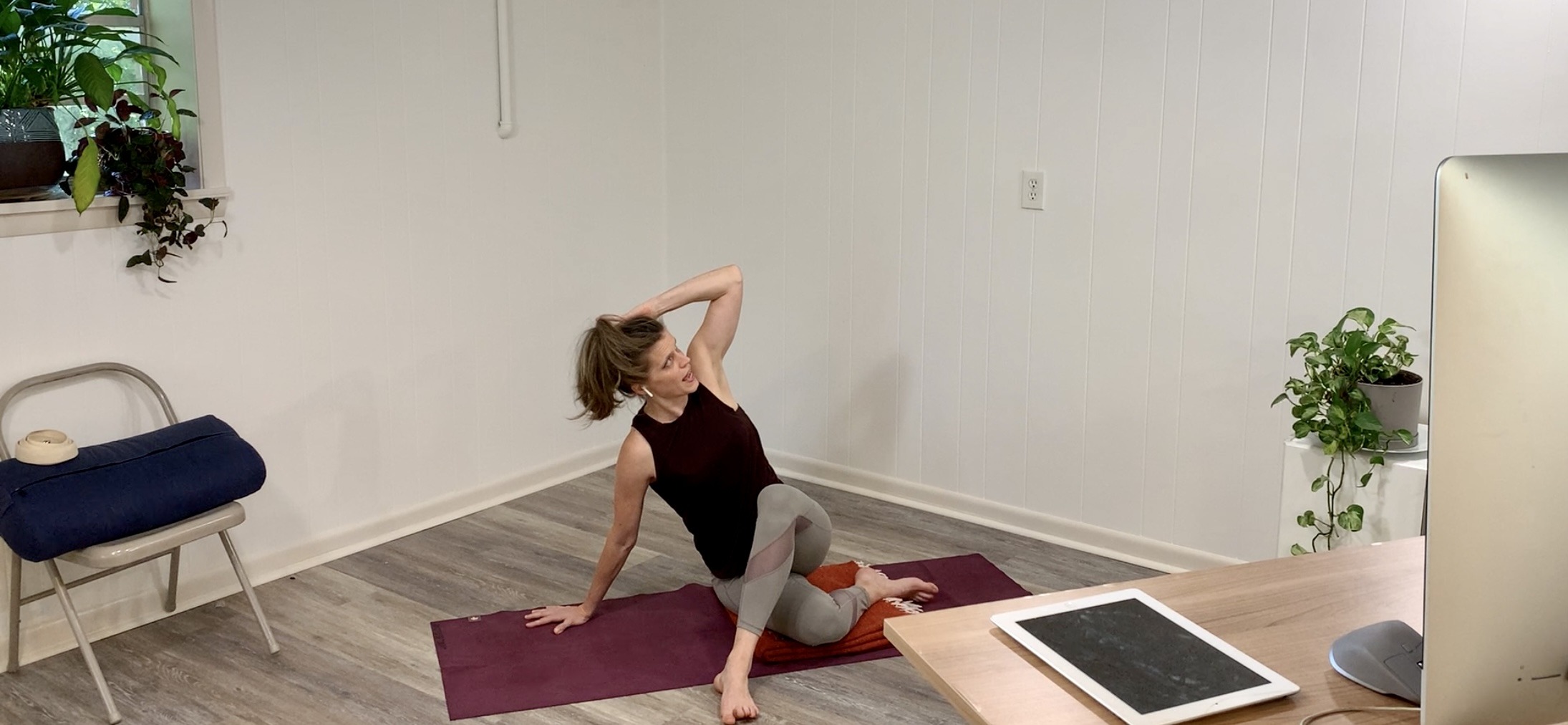Moving our classes online opened up many cans of worms, but perhaps the biggest one was the fact that suddenly we couldn’t see our students—as well or at all—when we were teaching. If you were taught to rely on verbal cues for your instructions, not being able to see how your words land in bodies basically removes your main source of feedback, leaving many teachers frustrated by students who turn off their cameras or don’t position them in optimal ways.

I was with you—as someone who loves giving individual feedback in my classes, a lack of visual made it pretty darn hard to give that kind of instruction! But the more I get comfortable with this new platform, the more I realize that not seeing my students isn’t entirely a drawback—and can actually be an advantage to the students’ ability to practice.
Here are 4 reasons why students being able to turn off their cameras is a good thing for teachers.
Privacy
Privacy and autonomy around getting to choose what we share and don’t share is something I believe we should celebrate as yoga teachers, not discourage, not persuade around, and definitely not shame. Everyone’s welcome to come to class as they are. Maybe one of those ways is they want to be there and not seen.
That might be tough for the teacher who feeds off student presence (I’m totally one of those teachers!) but don’t you also feel the energy of a person who is listening over the phone? Maybe teaching students with their cameras off is like that. Feel them listening.
One of the perks of an online practice is we can be “in the room” in whatever capacity we feel comfortable with, in the safety of our own space. This is an amazing development, and makes space for all kinds of folks for whom being in a physical room with others might be out of the question.

Dialogue
Sometimes students don’t not want to be seen, but are having trouble with the tech/set-up aspect of the online class format. Hey, adjusting to this new way of being together is hard, so there is plenty of room to celebrate people who are not as comfortable with technology just being able to show up! But as a teacher, you can use the camera off/on situation as a chance to open up dialogue about that choice. Saying something like “Hey Chris, I see you’re here but have your camera off—either way is fine with me and I’m glad you’re here!” might allow them to chime in with a question about their camera.
Or, if you’re seeing only part of your student, you can let them know what you see and invite them to make adjustments if they want more personal feedback. Maybe they had no idea you only saw part of their foot, or maybe the angle they have is the only option (given a room configuration, or using a desktop or phone camera that’s less adaptable in its range). But you can’t know if you don’t ask, and if the student says they aren’t looking for feedback then you also have that useful information to go off of.
Accountability
When a student chooses to have their camera off, I have to assume that they are making the best choices for themselves when it comes to their practice. For me, this is a great teaching opportunity since it draws away from any ego interfering in my presence; it reminds me my way is not the best or only way. As a teacher, it’s also a priority for me to have given my students tools to make the practice their own. Seeing that happen (including by not seeing it!) is hugely rewarding, and if a black square is proof of that evolution I’m more than happy to see that!

Adaptability
The lack of visual feedback for a teacher makes us get more creative with the kinds of teaching tools we use. If we only used verbal cues, we might start to find the benefits of demoing our classes; at the same time, if we are always demoing because we have no one to watch, that will help us clarify our language around what we’re actually doing and speak from a more interoceptive/experiential place. And maybe, as teachers, the way we determine what lands for our students can come less from what we think they need based on what we see, and more on what they tell us they need in the form of questions and comments in the conversations and chats after class.
Have you seen your teaching change in response to students having their cameras off?


Leave a Reply